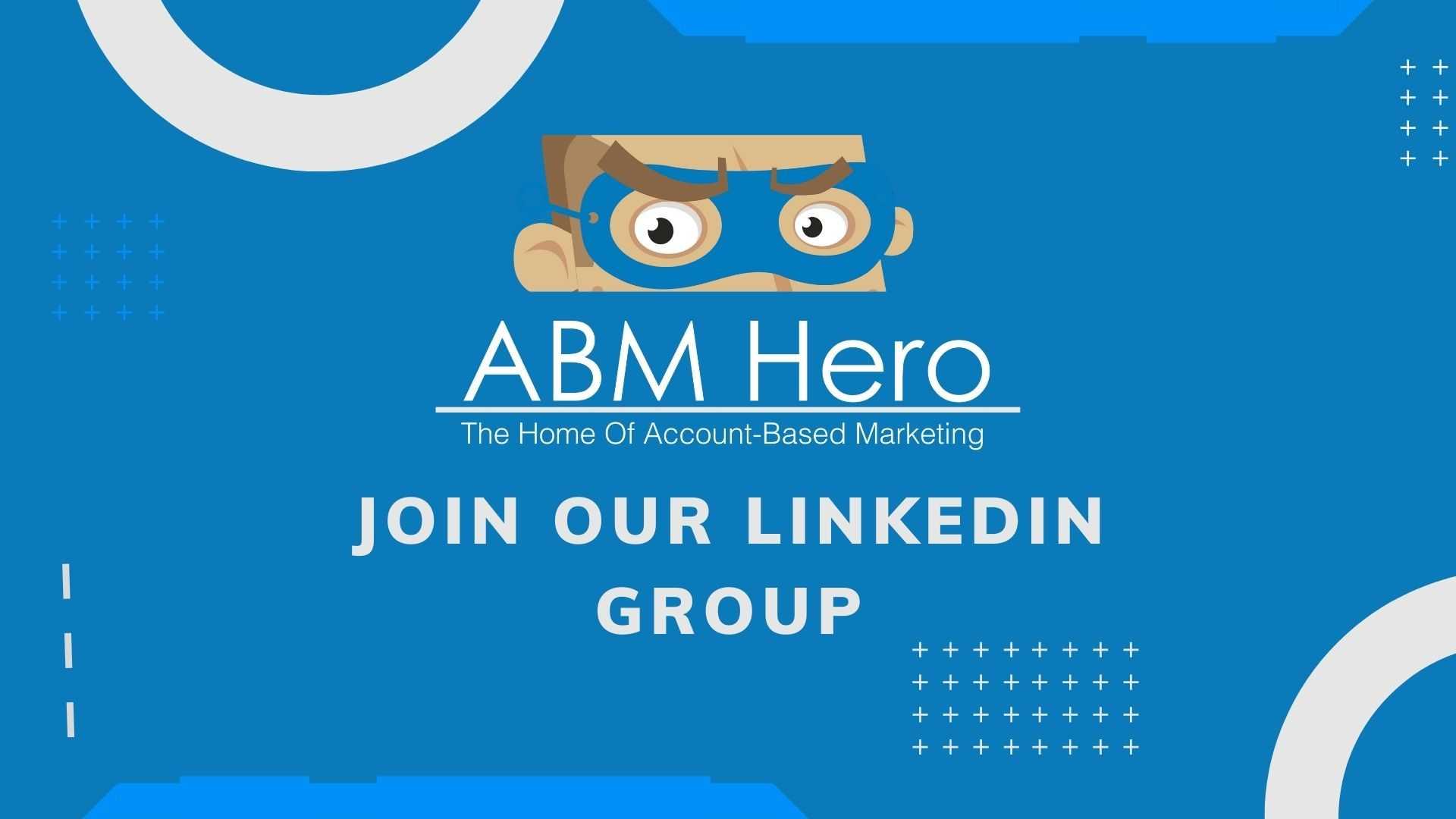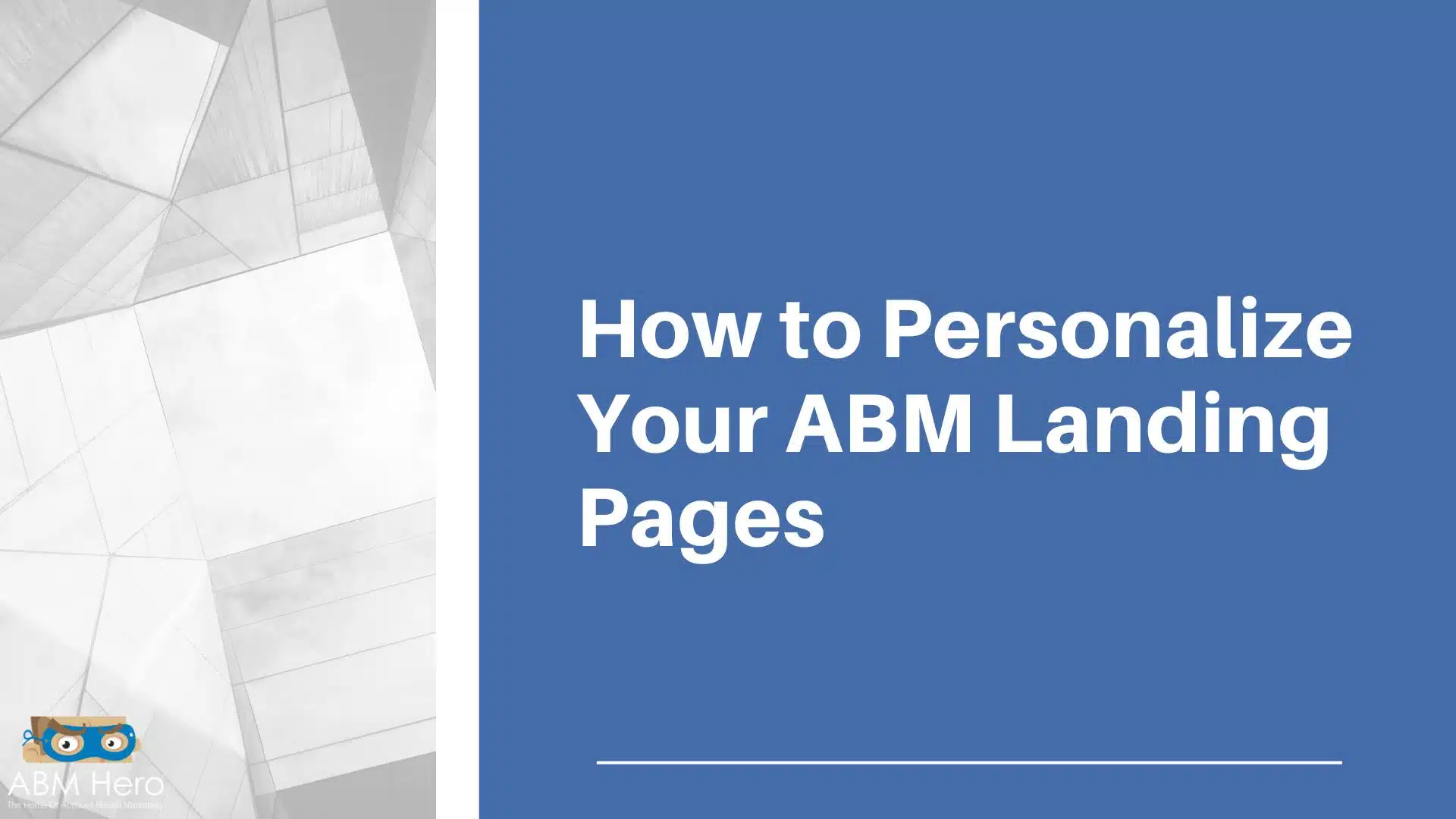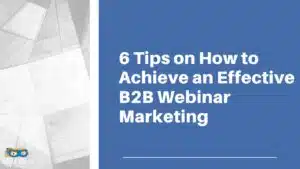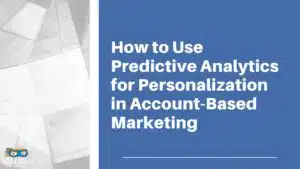In the world of digital marketing, personalization is vital. Gone are the days of generic, one-size-fits-all campaigns.
To succeed in today’s competitive market, you need to customize your content and message to the individual user.
This is where account-based marketing (ABM) comes in. ABM is a strategic approach to marketing that focuses on targeting individual accounts and delivering personalized content to each account.
One of the most powerful tools in an ABM strategy is the personalized landing page.
This article will explore how ABM and personalized landing pages can help you engage your target accounts and drive conversions within an account based marketing strategy.
Understanding ABM and Personalization
Account-Based Marketing (ABM) is a strategic approach that focuses on targeting and engaging specific accounts with personalized messages and offers. Personalization is a crucial element of ABM, as it allows businesses to tailor their content and experiences to the unique needs and interests of their target accounts. By leveraging data and analytics, businesses can gain a deeper understanding of their target accounts and create personalized experiences that resonate with them.
Personalization in ABM involves using data and analytics to create tailored content and experiences that speak to the unique needs and interests of each target account. This can include using personalized language, imagery, and offers that are relevant to the account’s industry, company size, and pain points. By personalizing the experience, businesses can build trust and credibility with their target accounts, increasing the likelihood of conversion.
What are Personalized Landing Pages?
Personalized landing pages are web pages designed for the individual user, outlined to be the first page a potential customer sees upon visiting a website. They are typically used to introduce the website and its services.
Personalized landing pages are integral to any website’s marketing strategy, as they can target a customer’s interests and needs directly.
By customizing the landing page based on a user’s past interactions with the website, the page can easily be tailored to the individual, increasing the likelihood that the customer will make a purchase. It is essential to create effective landing pages to engage visitors and enhance conversion rates.
Additionally, personalized landing pages can be used to track user behavior, enabling the website to understand better the content and services customers are most interested in.
The Importance of Personalized Landing Pages
Personalized landing pages are an essential component of the success of companies that employ an account-based marketing (ABM) strategy.
In ABM, companies target specific accounts and craft tailored messages to these accounts that are more likely to resonate with the decision-makers.
Therefore, effective landing pages play a crucial role in this process by providing the targeted accounts with a customized experience that reflects the tailored messages crafted for them.
By using personalized landing pages, companies can ensure that the account-based marketing messages they send out are received most effectively and engagingly possible.
Furthermore, personalized landing pages allow companies to feature highly relevant content to the targeted accounts and will be more likely to drive leads and conversions.
Identifying Target Accounts and Personas
Identifying target accounts and personas is a critical step in creating effective ABM landing pages. To identify target accounts, businesses should conduct research on their target market and the specific industries or companies that are most likely to benefit from their products or services. Key metrics to consider when identifying target accounts include company size, location, revenue, and other relevant factors.
Once target accounts have been identified, businesses should create buyer personas to better understand the needs and pain points of their target accounts. Buyer personas should include demographic information, such as job title, industry, and company size, as well as behavioral information, such as pain points, goals, and motivations. By creating detailed buyer personas, businesses can tailor their content and experiences to the unique needs and interests of their target accounts.
Present a Concise Header Message
When constructing a personalized landing page, it is best practice to include a concise header message.
This is because the header message instantly sets the page’s tone and provides context to the audience.
By being concise, the header message can be quickly read and comprehended by the viewer, allowing them to quickly assess the page’s purpose and decide whether to continue navigating.
Additionally, concise language makes the message less likely to be lost in the clutter of lengthy or jargon-filled text, thereby increasing the chances of it being seen and remembered by the viewer.
Finally, by utilizing a concise header message, the landing page can be kept to a manageable size, making it easier for viewers to navigate and look at your company. Including personalized calls to action in the header can further enhance engagement by addressing the specific needs and interests of your targeted accounts.
Share an Irresistible Offer
When attempting to personalize a landing page, sharing an irresistible offer is an essential practice that can be incredibly valuable for the page’s success.
An irresistible offer is attractive and seems too good to pass up and can be an effective way to convert visitors into leads and customers.
It can take many forms, such as a free trial, discount, product, or consultation.
By offering something of value tailored to the target audience’s interests, marketers can create an emotional connection between the visitor and the offer.
This connection can be further cultivated through targeted messaging that speaks directly to the audience’s needs.
Use Trustmarks
Trust marks are essential to any personalized Account-Based Marketing (ABM) landing page.
Trust marks are symbols or logos businesses, and organizations use to show that their practices have been vetted and certified by a third party.
They are created to assure customers that the services or products they receive are of the highest quality and are from a legitimate and reliable source.
Trust marks have become increasingly important in the digital age. The prevalence of online scams and fraudulent activities has made it more challenging to determine which companies are genuine and trustworthy.
These marks indicate that a trusted third party has approved the company, which can help reassure customers that the services or products they are receiving are legitimate and of the highest quality.
On top of that, trust marks can help to differentiate businesses from competitors.
Capitalize on Your Thank You Message
Personalizing an ABM (Account-Based Marketing) landing page is a decisive move, and one of the most impactful elements of this personalization is a thank-you message.
A thank you message is a great way to capitalize on the user’s experience on the page. It is applied to thank the user for taking the time to visit and providing additional information or resources.
Capitalizing on a thank you message allows the user to be provided with a feeling of appreciation, which can be a powerful motivator for them to continue to visit the page.
By utilizing this thank you message as an opportunity to provide further information, the user is encouraged to explore the page more thoroughly and to engage further with the content that will help them figure out what they want from you.
A/B Testing is the Key
A/B testing is invaluable for personalizing a landing page to maximize user engagement.
By creating two versions of a page, A and B, and comparing the user behavior, an organization can determine which one is more successful.
The experiment is designed to identify the exact changes necessary to create the best possible results.
A/B testing is beneficial for finding the perfect tone for a landing page.
By testing different page versions, a company can determine which combination of text, visuals, and other elements is most effective in resonating with its target audience.
The result is a landing page tailored to its users’ needs, ultimately leading to increased conversions and engagement.
Simplify Your Forms
Simplifying forms when personalizing landing pages can provide numerous advantages for the sales team. For starters, it can streamline the user experience, providing the user with an intuitive and straightforward way to input their information.
It can reduce the chances of data entry errors, as the user will only be required to input the essential information.
Also, it can reduce the time it takes the user to complete the form, as they will not be asked to input extra information.
Plus, it helps improve the overall conversion rate, as users are more likely to complete the form if it is simpler and quicker.
Indeed, it can reduce the strain on the server, as it will not have to process many fields.
Remove Navigation Bars
When personalizing a landing page, remove navigation bars to create a more focused and streamlined experience for the user.
It is by removing the distraction of a navigation bar, which can often be filled with many links and options, and instead focusing solely on the main messages and content you wish to convey.
By removing the navigation bar, the user is more likely to quickly and easily digest the critical information on the page rather than be overwhelmed by the multitude of options that a navigation bar may present.
Additionally, this can help create a more modern and aesthetically pleasing design and avoid clutter and confusion when it comes to the user interface.
Organize Your Pages
Organizing your landing pages is essential for optimizing your website’s user experience and creating an effective and successful marketing strategy.
Landing pages capture leads and convert visitors into customers, so it is crucial to ensure that they are appropriately organized.
A well-organized landing page allows you to create a user-friendly experience and make it easier for potential customers to navigate your website.
It also provides an excellent opportunity to showcase your products or services to your target audience and increase customers’ likelihood of purchasing.
Additionally, a well-organized landing page allows you to direct traffic to the right page, reducing the risk of potential customers leaving your website due to confusion.
It leads to improved customer engagement and higher conversion rates.
Account-based marketing and personalized landing pages are essential components of an effective digital marketing strategy that can help you stand out in digital marketing.
By tailoring your message to each specific customer, you can create a powerful emotional connection that drives loyalty and leads to more sales.
With imagination, creativity, and dedication, you can create personal and engaging experiences that will help you achieve better KPIs.
Integrating with Marketing Automation and CRM
Integrating ABM landing pages with marketing automation and CRM systems is essential for streamlining marketing efforts and better understanding the behavior and interests of target accounts. Marketing automation platforms can help businesses automate and streamline marketing tasks and processes, such as email marketing and lead scoring. CRM systems can help businesses manage and analyze customer interactions and data throughout the customer lifecycle.
By integrating ABM landing pages with marketing automation and CRM systems, businesses can gain a deeper understanding of their target accounts and create personalized experiences that resonate with them. This can include using data and analytics to create tailored content and experiences, as well as automating marketing tasks and processes to increase efficiency and effectiveness.
Conclusion
Creating effective ABM landing pages requires a deep understanding of target accounts and personas, as well as the ability to personalize content and experiences to their unique needs and interests. By leveraging data and analytics, businesses can gain a deeper understanding of their target accounts and create personalized experiences that resonate with them. Integrating ABM landing pages with marketing automation and CRM systems can help businesses streamline marketing efforts and better understand the behavior and interests of their target accounts. By following these best practices, businesses can create effective ABM landing pages that drive conversions and revenue.
